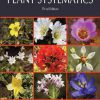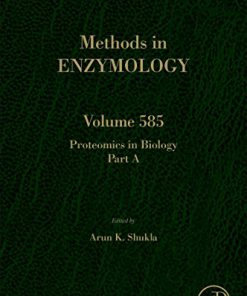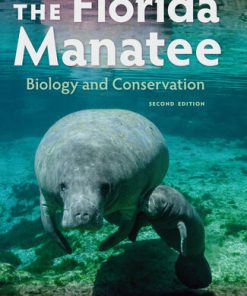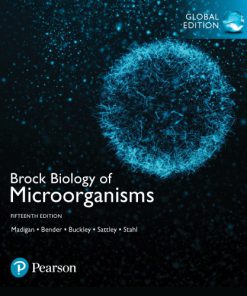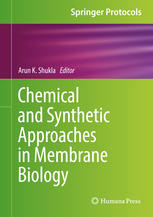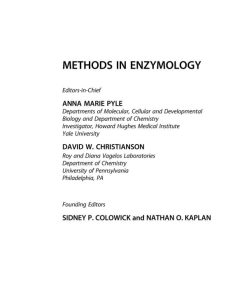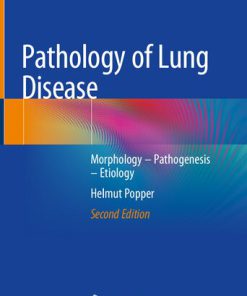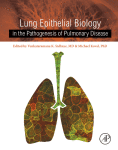Biology of Microorganisms on Grapes in Must and in Wine 2nd Edition by Helmut 3319600214 9783319600215
$50.00 Original price was: $50.00.$25.00Current price is: $25.00.
Biology of Microorganisms on Grapes in Must and in Wine 2nd Edition by Helmut Konig – Ebook Instant Download/Delivery ISBN(s): 3319600214, 9783319600215
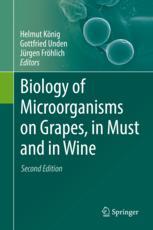
Product details:
- ISBN 10: 3319600214
- ISBN 13: 9783319600215
- Author: Helmut Konig
The ancient beverage wine is the result of the fermentation of grape must. This n- urally and fairly stable product has been and is being used by many human societies as a common or enjoyable beverage, as an important means to improve the quality of drinking water in historical times, as therapeutical agent, and as a religious symbol. During the last centuries, wine has become an object of scientific interest. In this respect different periods may be observed. At first, simple observations were recorded, and subsequently, the chemical basis and the involvement of microorg- isms were elucidated. At a later stage, the scientific work led to the analysis of the many minor and trace compounds in wine, the detection and understanding of the biochemical reactions and processes, the diversity of microorganisms involved, and the range of their various activities.
Table of contents:
Part I: Diversity of Microorganisms
Chapter 1: Lactic Acid Bacteria
1.1 Introduction
1.2 Ecology
1.3 Phenotypic and Phylogenetic Relationship
1.4 Physiology
1.5 Genetics
1.6 Activities in Must and Wine
1.7 Characteristics of Genera and Species of Wine-Related Lactic Acid Bacteria
1.7.1 Genus Lactobacillus
1.7.2 Genus Leuconostoc
1.7.3 Genus Oenococcus
1.7.4 Genus Pediococcus
1.7.5 Genus Weissella
1.8 Conclusions
References
Chapter 2: Acetic Acid Bacteria
2.1 Introduction
2.2 From Grapes to Wine: An Adverse Environment
2.3 Isolation and Taxonomy
2.4 Molecular Techniques for Routine Identification of AAB
2.5 AAB Ecology During Winemaking
2.5.1 AAB in Grapes and Musts
2.5.2 AAB During Fermentation
2.5.3 AAB During Ageing and Wine Maturation
2.6 Acetic Acid Bacteria and Wine Spoilage
2.7 Conclusion: Prevention of Wine Spoilage and Oenological Practices
References
Chapter 3: Yeasts
3.1 Introduction
3.2 Non-Saccharomyces Strain Diversity
3.2.1 Assessment of Non-Saccharomyces Yeast Diversity
3.2.2 Factors Affecting Non-Saccharomyces Diversity: Presence in Vineyard
3.2.3 Factors Affecting Non-Saccharomyces Diversity: Impact of Fermentation Management on Persistenc
3.2.4 Impact of Non-Saccharomyces Strains on Wine Flavor, Aroma, and Mouthfeel
3.3 Diversity of Saccharomyces
3.3.1 Methods of Analysis
3.3.2 Genomic Diversity
3.3.3 Saccharomyces Hybrid Strain Diversity
3.4 Conclusions
References
Chapter 4: Fungi of Grapes
4.1 Introduction
4.2 Peronosporomycetes
4.2.1 Plasmopara viticola (Berk. and Curt.) Berl. and De Toni: Grapevine Downy Mildew
4.3 Ascomycetes
4.3.1 Erysiphe necator Schwein. (emend. Uncinula necator (Schw.) Burr) (Erysiphales): Grapevine Powd
4.3.2 Botrytis cinerea Pers.:Fr. (Helotiales): Botrytis Bunch Rot
4.3.3 Pseudopezicula tracheiphila (Müll.-Thurg.) Korf and Zhuang (Helotiales): Rotbrenner
4.3.4 Phomopsis viticola (Sacc.) Sacc (Diaporthales): Phomopsis Cane and Leaf Spot
4.3.5 Elsinoë ampelina Shear (Myringiales): Anthracnose (Schwarzer Brenner)
4.3.6 Guignardia bidwellii (Ellis) Viala and Ravaz (Dothideales): Black Rot
4.3.7 Penicillium expansum Link (Eurotiales): Green Mould
4.3.8 Aspergillus spec. (Eurotiales): Aspergillus Rot
4.3.9 Coniella petrakii B. Sutton (Diaporthales): White Rot
4.3.10 Alternaria alternata (Fr.: Fr.) Keissler (Pleosporales): Alternaria Rot
4.3.11 Cladosporium herbarum (Pers.) Link (Capnodiales): Cladosporium Rot
4.3.12 Trichothecium roseum (Pers.) Link (Hypocreales): Pink Rot
4.4 Zygomycetes
4.4.1 Rhizopus stolonifer (Ehrenb.) Lind. (Mucorales): Rhizopus Rot
4.4.2 Mucor Spp. (Mucorales): Mucor Rot
4.5 Conclusions
References
Chapter 5: Viruses of Wine-Associated Yeasts and Bacteria
5.1 Introduction
5.2 Killer Yeasts and Wine Fermentation
5.3 Viral Infections Can Cause a Killer Phenotype in Yeast
5.3.1 dsRNA Viruses and Killer Phenotype Expression in Wine Yeast
5.3.2 Viral Preprotoxin Processing and Toxin Maturation
5.3.3 Endocytosis and Intracellular Toxin Transport
5.3.4 K28 Affects DNA Synthesis and Cell Cycle Progression and Induces Apoptosis
5.3.5 Lethality of Membrane-Damaging Killer Toxins
5.4 Toxin Immunity Ensures Self-Protection in Killer Yeast
5.5 Phages in Wine and Malolactic Conversion
5.6 General Properties of Oenophages
5.7 Oenophage-Host Interactions
5.8 Sequencing and Functional Genomics
5.8.1 General Outline of Oenophage Genome Organization
5.8.2 Multiple tRNA Loci as Sites for Phage DNA Integration in the Host Chromosome
5.8.3 The Lysis Region and a New Mechanism of Phage-Induced Host Lysis
5.9 Conclusions
References
Chapter 6: Yeast Mixtures and Saccharomyces Hybrids: Suitable Tools for Performing More Sophisticate
6.1 Introduction
6.2 Principal Modes and Problems of the Alcoholic Fermentation
6.3 Future-Oriented Aspects of Producing More Sophisticated Wines
6.3.1 Increased Use of Wild Yeasts and Mixtures of Yeast Strains
6.3.2 Fermentation with Hybrid Yeasts
6.4 Conclusions
References
Chapter 7: Secondary Metabolites of Fungal Vine Pathogens
7.1 Introduction
7.2 Secondary Metabolites from Fungi as Causal Agents for Grapevine Diseases
7.2.1 Grapevine Trunk Diseases
7.2.2 Phytotoxic Secondary Metabolites Produced by Esca-Associated Fungi
7.3 Concluding Remarks
References
Part II: Primary, Secondary and Energy Metabolism
Chapter 8: Carbohydrate Metabolism in Wine Yeasts
8.1 Introduction
8.2 Sugars in Wine Fermentations and Regulatory Principles
8.3 Biochemistry and Physiology of Yeast Alcoholic Fermentation
8.3.1 Hexose Transport
8.3.2 Glycolysis
8.3.3 Pyruvate Decarboxylase and Alcohol Dehydrogenase
8.3.4 Glycerol and Acetate as Fermentation By-Products
8.4 Regulation of Carbohydrate Metabolism in Yeasts: Glucose Signaling
8.4.1 The SNF1 Kinase Complex and Glucose Repression
8.4.2 Signaling Through the cAMP/PKA Pathway
8.4.3 Glucose Induction Mediated by the Snf3/Rgt2 Sensors Targets Sugar Transport
8.4.4 General Transcription Factors for High Level Expression of Glycolytic Genes
8.5 Conclusions and Perspectives
References
Chapter 9: Metabolism and Transport of Sugars and Organic Acids by Lactic Acid Bacteria from Wine an
9.1 Introduction
9.2 Special Features of the Phosphoketolase Pathway of O. oeni: The Use of Alternative Reactions for
9.2.1 Phosphoketolase Pathway and Limitation of Ethanol Formation
9.2.2 Endogenous Alternative Pathways for [H] Reoxidation
9.2.3 Glucose Transport
9.3 Modified Hexose Fermentation by the Use of External Electron Acceptors
9.3.1 The Use of External Electron Acceptors
9.3.2 Biotechnological Production of Polyols by Heterolactic Acid Bacteria
9.4 Fermentation of Organic Acids
9.4.1 Malate (or `Malolactic´) Fermentation
9.4.2 Citrate Fermentation
9.4.3 Pyruvate Fermentation
9.4.4 Fumarate Fermentation
9.4.5 l-Tartaric Acid Fermentation
9.5 Conclusion
References
Chapter 10: Amino Acid Metabolisms and Production of Biogenic Amines and Ethyl Carbamate
10.1 Introduction
10.2 Biogenic Amine Production by Wine Yeasts
10.3 Biogenic Amine Production by Lactic Acid Bacteria
10.3.1 Histamine Production
10.3.2 Tyramine Production
10.3.3 Putrescine Production
10.3.4 Production of Other Amines
10.3.5 Physiological Role of Amine Production
10.4 Biogenic Amine Accumulation During Wine Fermentations
10.5 Strategies to Minimize or Reduce BA in Wine
10.6 Ethyl Carbamate Formation in Wine
10.7 Conclusions
References
Chapter 11: Usage and Formation of Sulphur Compounds
11.1 Introduction
11.2 Sulphur Metabolism of Yeast
11.2.1 Sulphur Amino Acid Biosynthesis
11.2.2 Sulphite Production
11.2.3 Importance of Glutathione
11.2.4 Volatile Sulphur Compounds
11.2.4.1 Hydrogen Sulphide and Related Volatile Sulphur Compounds
11.2.4.2 Occurrence and Formation of Thiols Involved in the Varietal Flavour of Wines
11.3 Sulphur Metabolism of Lactic Acid Bacteria
11.4 Conclusions
References
Chapter 12: Polysaccharide Production by Grapes Must and Wine Microorganisms
12.1 Introduction
12.2 PS Produced by Botrytis cinerea
12.2.1 Structure of the PS Produced
12.2.2 PS Production Kinetics
12.2.3 Benefit for the Fungus
12.2.4 Impact on Wine Quality
12.3 Yeast Mannoproteins
12.3.1 Yeast Cell Wall Organisation and MP Structure
12.3.2 Physiology of MP Release
12.3.3 Benefit for the Wine Yeasts
12.3.4 Impact on Wine Quality
12.4 Production of PS by Wine Lactic Bacteria
12.4.1 Structure and Location of Wine Bacterial PS
12.4.2 Biosynthetic Pathways and Associated Genes
12.4.3 Physiology of PS Release and Benefits for the Bacteria
12.4.4 Impact on Wine Quality and Winemaking Practices
12.5 Conclusion
References
Chapter 13: Microbial Enzymes: Relevance for Winemaking
13.1 Introduction
13.2 Enzymatic Transformations of Wine Ingredients
13.2.1 Proteases
13.2.2 Glucanases
13.2.3 Pectinases
13.2.4 Glycosidases
13.2.5 Lipases
13.2.6 Esterases
13.2.7 Phenoloxidases
13.2.8 Tannases
13.3 Mixed Starter Fermentations
13.4 Conclusions
References
Chapter 14: Laccases of Botrytis cinerea
14.1 Introduction
14.2 Fungal Laccases
14.3 Botrytis Laccases
14.4 Botrytis Laccase and Resveratrol
14.5 Botrytis Laccase and Wine Browning
14.6 Botrytis Laccase, Wine Polyphenolics, and Human Health
14.6.1 Features of Polyphenols
14.6.2 Botrytis Laccase and Biogenic Amines
14.7 Fungal Laccases in Wine Biotechnology
14.8 Conclusions
References
Chapter 15: Polyphenol Oxidases from Wine Grapes
15.1 Introduction
15.2 Type-3 Copper Proteins: Tyrosinase, Catecholoxidase, and Hemocyanins
15.3 Tyrosinase and Catecholoxidase in Plants
15.4 Grape Polyphenol Oxidase
15.5 Kinetic Characterization of Grape Tyrosinase
15.6 Activity of Riesling Polyphenol Oxidase During Grape Berry Development and Vinification
15.6.1 Activity of Riesling Tyrosinase During Grape Berry Development and Ripening
15.6.2 Activity of Riesling Tyrosinase During Vinification
15.7 Influence of Sulfur and Bentonite on Tyrosinase Activity
15.8 Influence of Grape Tyrosinase on Wine Phenols and Their Antioxidant Capacity
15.8.1 Oxidation of Phenolic Wine Compounds by Polyphenol Oxidases
15.8.2 Antioxidative Activity of Phenolic Wine Compounds
References
Part III: Stimulating and Inhibitory Growth Factors
Chapter 16: Stress Responses in Wine Yeast
16.1 Introduction
16.2 Stress Response Signalling Pathways
16.2.1 The High Osmolarity Glycerol (HOG) Pathway
16.2.2 The Cell Wall Integrity (CWI) Pathway
16.2.3 The Heat Shock Response (HSR) Pathway
16.2.4 The General Stress Response (GSR) Pathway
16.2.5 The Oxidative Stress Response (OSR) Pathway
16.2.6 Crosstalk Between Different Stress Response Pathways
16.3 Specific Physical and Chemical Stress Factors Encountered in Vinification
16.3.1 Ethanol Stress
16.3.2 Nutrient Limitations
16.3.3 Acid Stress
16.3.4 Sulphite Resistance
16.3.5 Cold Stress
16.4 Emerging Issues
References
Chapter 17: Physical and Chemical Stress Factors in Lactic Acid Bacteria
17.1 Introduction
17.2 Parameters Influencing Malolactic Fermentation and Limiting the Growth of Lactic Acid Bacteria
17.2.1 Enological Practices
17.2.2 Microbiological Factors
17.2.3 Physical and Chemical Factors
17.2.4 Other Factors Specific to Wine
17.2.5 Common Molecular Responses to Physical and Chemical Stress
17.3 Conclusions
References
Chapter 18: Influence of Phenolic Compounds and Tannins on Wine-Related Microorganisms
18.1 Introduction
18.2 Classification of the Polyphenols
18.3 Polyphenol Biosynthesis
18.3.1 Shikimic Acid Partition
18.3.2 Phenylpropanoid Partition
18.3.3 Flavonoid Partition
18.4 Typical Contents of Phenols in Grapes and Grape Products
18.5 Resveratrol
18.6 Antimicrobial Effects of Polyphenols in Grapes
18.6.1 Resveratrols
18.6.2 Flavonoids
18.6.3 Formation of Flavonoid Oxidation Products (FOP)
18.6.4 Salicylic Acid: Systemic Acquired Resistance
18.7 Antimicrobial Effects of Polyphenols in General
18.8 Polyphenols Formation During Winemaking
18.9 Interactions of Polyphenols with Wine Yeasts (Saccharomyces cerevisiae) and Other Microorganism
18.9.1 Increasing the Live Expectancy of Saccharomyces with Resveratrol
18.10 Conclusions
References
Part IV: Molecular Biology and Regulation
Chapter 19: Genomic Evolution and Adaptation to Wine of Oenococcus oeni
19.1 Introduction
19.2 The O. oeni Genome
19.2.1 General Features
19.2.2 Hypermutability
19.2.3 Plasmids and Phages
19.3 Intraspecific Genomic Variability
19.3.1 Phylogenomic Structure of O. oeni
19.3.2 Core- and Pan-Genomes
19.3.3 Industrially Relevant Genes
19.4 Biogeography
19.5 Conclusions
References
Chapter 20: The Genomes of Acetic Acid Bacteria
20.1 Introduction
20.2 Acetic Acid Bacteria in Oenology
20.3 The Lifestyle of Acetic Acid Bacteria
20.4 Characteristics of Acetic Acid Bacteria Genomes
20.4.1 Transposable Elements
20.4.2 Plasmids
20.4.3 Phages
20.5 The Membrane-Bound and the Soluble Dehydrogenases
20.5.1 Membrane-Bound Dehydrogenases
20.5.2 Soluble Dehydrogenases
20.6 Structure of the Respiratory Chain
20.7 The Central Metabolism
20.8 Conclusion and Outlook
References
Chapter 21: Plasmids from Wine-Related Lactic Acid Bacteria
21.1 Introduction
21.2 Lactobacillus
21.3 Leuconostoc
21.4 Oenococcus oeni
21.4.1 Plasmids
21.4.2 Development of Cloning Vectors and Transformation Systems for O. oeni
21.5 Pediococcus
21.5.1 Plasmids
21.5.2 Plasmid Transfers into Pediococcus
21.6 Conclusion
References
Part V: Modern Methods
Chapter 22: Molecular Methods for Identification of Wine Microorganisms and Yeast Development
22.1 Introduction
22.2 Micromanipulation Techniques
22.2.1 Historical Perspective
22.2.2 Modern Equipment
22.3 Isolation Techniques
22.3.1 Bactotip Method
22.3.2 Membrane Method
22.3.3 Efficiency of the Cloning Procedure
22.3.4 Use of Micromanipulation Techniques and nSAPD-PCR for Protoplast Fusion and Strain Developmen
22.3.5 Development of a Less Alcohol-Producing Yeast Using Mutagenesis, nSAPD-PCR, and Micromanipula
22.4 Laser Micromanipulation Systems
22.4.1 Optical Tweezers
22.4.2 Laser Microdissection
22.5 Molecular Biological Techniques
22.5.1 Resolution of Molecular Biological Methods
22.5.2 Molecular Biological Techniques
22.5.2.1 Decontamination and DNA Enrichment Techniques for Low Contents of Genomic DNA (gDNA)
22.5.2.2 Amplified Ribosomal rDNA Restriction Analysis (ARDRA)
22.5.2.3 Nested Specifically Amplified Polymorphic DNA-PCR (nSAPD-PCR)
22.5.2.4 Sequence Characterized Amplified Region PCR (SCAR-PCR) and Multiplex PCR
22.5.2.5 Fluorescence In Situ Hybridization (FISH)
22.5.2.6 PCR Temperature/Denaturing Gradient Gel Electrophoresis (PCR-T/DGGE)
22.5.2.7 Real-Time PCR/Quantitative PCR (qPCR)
22.5.2.8 Pulsed-Field Gel Electrophoresis (PFGE) for Strain-Specific Differentiation
22.6 Conclusions
References
Chapter 23: Maintenance of Wine-Associated Microorganisms
23.1 Introduction
23.2 Bacteria
23.2.1 Genera of Acetic Acid Bacteria
23.2.2 Genus Lactobacillus
23.2.3 Genus Leuconostoc
23.2.4 Genus Oenococcus
23.2.5 Genus Pediococcus
23.2.6 Genus Weissella
23.3 Yeast
23.4 Fungi
23.5 Conclusions
References
Chapter 24: Functional Genomics in Wine Yeast: DNA Arrays and Next Generation Sequencing
24.1 Introduction
24.2 Short Overview of the DNA Array Technology
24.3 Impact of DNA Array Technology on Yeast Gene Expression Research
24.4 Impact of RNA Sequencing on Yeast Gene Expression Research
24.5 Transcriptional Response of Saccharomyces cerevisiae to Oenological Relevant Stresses
24.6 Expression Responses of Wine Yeasts to Stress Situations During Vinification
24.7 Genome-Wide Expression Studies in Wine Yeast
24.8 Structural Genomics Studies in Wine Yeast Strains
24.9 Conclusions
References
Chapter 25: Application of Yeast and Bacteria as Starter Cultures
25.1 Introduction
25.2 Application of Yeast Starter Cultures
25.2.1 Selection of the Yeast Strains for Winemaking
25.2.2 Wine Yeast Characterization
25.2.3 Choice of the Active Dry Yeast Starter Cultures
25.2.4 Utilization of Active Dry Yeast Starter Cultures
25.3 Application of Bacterial Starter Cultures
25.3.1 Selection and Characterization of Lactic Acid Bacteria for Winemaking Starter Culture Prepara
25.3.2 Malolactic Starter Culture Preparations
25.3.3 Choice of the Appropriate Malolactic Starter Cultures
25.3.4 Restarting Stuck Malolactic Fermentations
25.3.5 Contribution of the Malolactic Starter Culture to the Sensory Quality of Wine
25.4 Innovations and New Applications for Enological Products
25.4.1 Low SO2 Approach
25.4.2 Low Alcohol Approach
25.4.3 Acidity Management Approach
25.4.4 Microbial Safety Approach
25.5 Conclusion
References
Chapter 26: Application of Microbial Enzymes During Winemaking
26.1 Introduction
26.1.1 History of Enzyme Use in Winemaking
26.1.2 Regulation of Enzyme Use in Winemaking
26.1.3 Development and Production of Food Enzymes
26.2 Application of Enzymes in Winemaking
26.2.1 Mash Treatment
26.2.2 Juice Treatment
26.2.3 Wine Treatment
26.3 Enzymes with Negative Effect on Wine Quality
26.3.1 Cinnamoyl Esterase
26.3.2 Anthocyanase
26.3.3 Polyphenol Oxidase
26.4 Recent Developments and Future Options
References
Chapter 27: Mass Spectrometry: A Powerful Tool for the Identification of Wine-Related Bacteria and Y
27.1 Introduction
27.2 MS and MALDI-TOF MS: A Brief History
27.3 MALDI-TOF MS Instrumentation and Technique
27.4 Biomarkers
27.5 Sample Preparation
27.6 MALDI-TOF MS Platforms, Software, Databases, and Data Processing
27.7 Microbial Typing: Profile-Based Subspecies Level Identification by MALDI-TOF MS
27.8 Parameters Influencing MALDI-TOF MS Microbial Typing: Successes, Challenges, and Strategies to
27.8.1 Culture Conditions
27.8.2 Sample Preparation
27.8.3 Data Acquisition
27.8.4 Data Analysis
27.8.5 Reference Databases
27.8.6 MS Maintenance and Quality Control
27.9 MALDI-TOF MS Applications in Environmental Microbiology
27.10 Microorganisms Involved in Winemaking Process
27.11 MALDI-TOF Analysis of Wine-Associated Microbiota
People also search:
bacteria on grapes
science of grapes
science of grape growing
grapes microbiome
diseases in grapes
You may also like…
Biology and other natural sciences
The Florida Manatee Biology and Conservation 2nd Edition Roger L Reep Robert K
Biology and other natural sciences
Biology and other natural sciences - Molecular
Science (General)
Uncategorized
Biology and other natural sciences - Biotechnology
Biology and Biotechnology of Patagonian Microorganisms 1st Edition Nelda Lila Olivera


